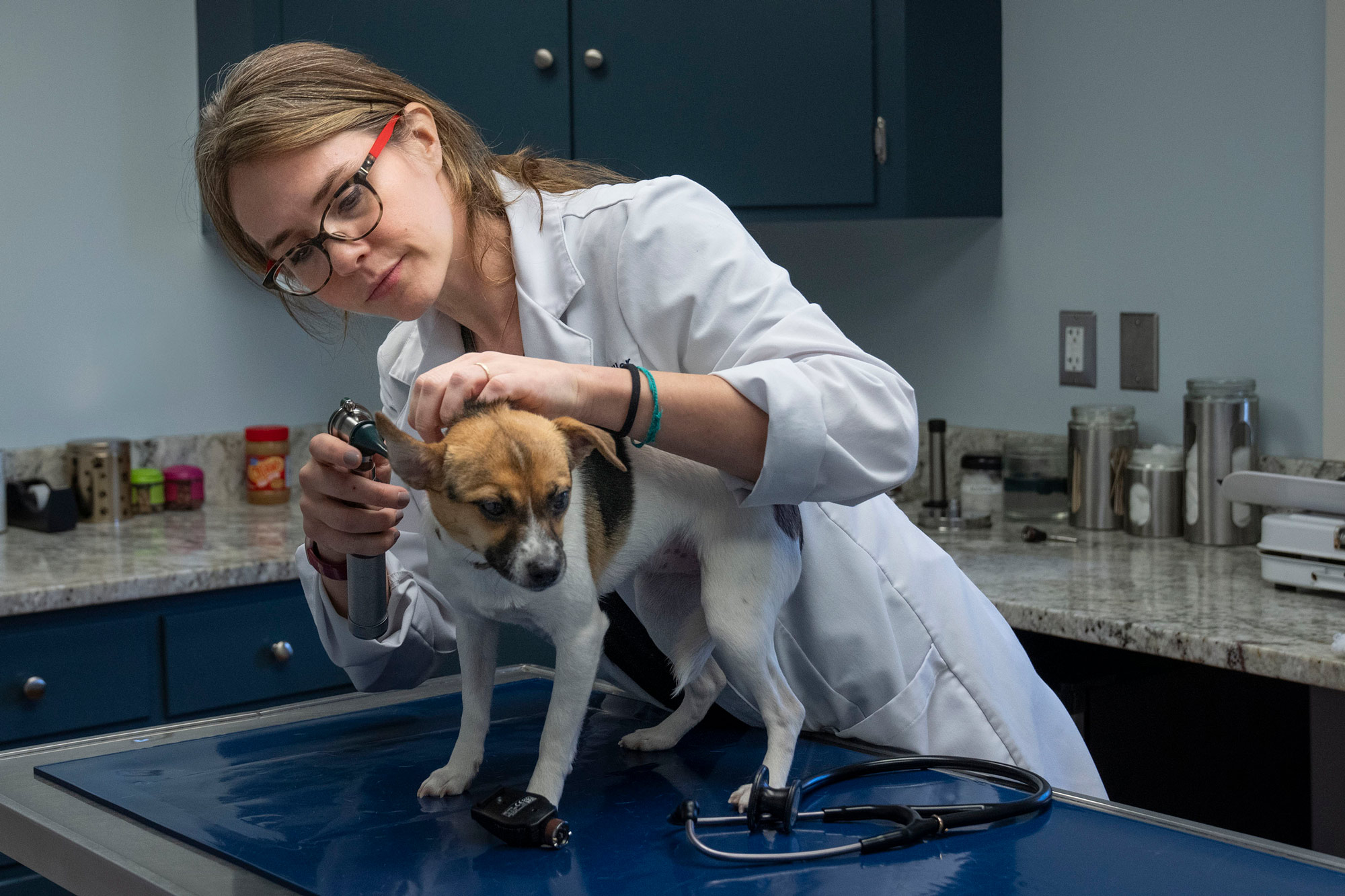After scraping the ice off the windshield and loading up the trunk with luggage and wrapped gifts, families with dogs often complete one last task before heading out for an extended holiday trip.
Drop their dog off at the trusted boarding place.
But a recent rise in a mysterious illness among canines throughout the United States could be enough for “pawrents” to reconsider their plans for their pup this holiday season.
As of late last week, 16 states have officially recorded cases of what’s being called “Atypical Canine Infectious Respiratory Disease Complex.” While it’s yet to be identified in Virginia, the contagious illness has been found in Maryland.
In rare cases, like some in California, the illness can lead to euthanasia.
To learn more about the illness and what dog owners should know ahead of any potential travels, UVA Today caught up with Dr. Jessie Miller of the Georgetown Veterinary Hospital in Charlottesville. Miller received her bachelor’s degree in Russian history and French from the University of Virginia in 2006 before going on to veterinary school.
Q. In basic terms, what is the nature of this illness, and how does it spread?
A. We don’t have a definitive answer for this yet. However, the suspicion among many in the field is that there are some areas of the country that are having increases in the number of cases. It’s a group of bacteria and viruses that have been known to cause upper and lower respiratory disease in dogs. “Kennel cough“ is how we would describe it in lay terms. This happens every year and some areas seem to be hit worse than others.
Currently, there has been no evidence that the respiratory illness we are seeing this year is caused by a new virus or bacteria. However, this hasn’t been entirely ruled out. Testing is ongoing, so we may yet find new information that changes that perspective.
There are some practitioners who have posited that this may be related to us coming out of COVID restrictions and socializing dogs more.
As for transmission, as with many respiratory illnesses, the suspicion is that this illness is likely spread through respiratory secretions – cough, sneeze, nasal discharge and via fomites (materials/objects that come in contact with these secretions).
Q. How is the illness treated?
A. The vast majority of cases are self-limiting and respond well to cough suppressants and supportive care, with clinical signs/symptoms improving within seven to 14 days and often sooner. Some cases will develop pneumonia, unfortunately, and among these patients, a very small number will progress to having more severe, and sometimes life-threatening, disease. Keep in mind that these are the minority and we still suspect that is the case currently.

That said, there are some practitioners who have reported increased duration of clinical signs like cough, sometimes for six to eight weeks, and decreased response to supportive care medications to help reduce these clinical signs.
Q. Are there any preventive measures you recommend for dog owners?
A. Unfortunately, we are all well-versed at this point in how to reduce risk of exposure to a respiratory illness: isolation. As dogs can’t (and should not!) wear masks, avoiding areas where they are in groups (boarding, day care, classes, dog parks) is helpful in reducing exposure to this illness. This is especially the case if you plan to visit areas over the holiday where we are seeing an increased number of cases.
Also, if you feel like you may have been exposed to a dog showing respiratory signs, washing your hands and changing your clothes is a good idea before interacting with your pet.
It is also always helpful to ensure that your pet is up to date on vaccines and otherwise healthy as this gives their immune system the best chance at fighting off infection should they encounter it.
Q. What are the symptoms? And what should a dog owner do if they think their pet is showing symptoms?
A. Symptoms tend to include cough, malaise or mild lethargy, fever in some, nasal discharge, sneezing. Many may not feel like eating much for a short period of time – especially if their cough is frequent. More severe signs include significant lethargy, inappetence [lack of appetite] and increased effort breathing.
If an owner thinks their pet is showing symptoms, the first step is to not panic! Remember that the vast majority of these cases (even in areas where there is a higher caseload) will recover well and never develop pneumonia or any life-threatening aspect of the illness. Also, keep in mind that even healthy dogs sneeze and cough occasionally, so one cough does not necessarily indicate infection.

If your dog is showing symptoms, feel free to reach out to your veterinarian. This is helpful for disease surveillance and your vet will be able to recommend appropriate next steps based on the symptoms your pet has. Keep in mind that you will likely be asked to wait in your car once you arrive at the clinic, and your pet may have an exam outside to help reduce exposure to the rest of the clinic.
Q. How long is a dog with the illness contagious? And how long should infected dogs be kept away from other dogs?
A. At this stage, we do not know how long it is contagious. Unfortunately, some dogs this year seem to have a cough for much longer than our typical seven- to 14-day range – some extending to six to eight weeks.
The general rule of thumb is that if they are still coughing, there is a chance they are still infectious. For typical kennel cough, dogs are considered safe to be around other dogs 14 days after they stop coughing. For these cases where the cough lasts longer, we do not know yet whether they are infectious for that long or if the cough could be due to a secondary symptom that is lasting beyond the infectious period.
Q. Does it seem to be affecting any kind of dog breed more than another?
A. I am not aware of any breed being affected more than another, but we’re still getting information about this, so that may change with time.
Media Contact
University News Associate University Communications
fpa5up@virginia.edu (434) 924-6856
Article Information
May 4, 2024






